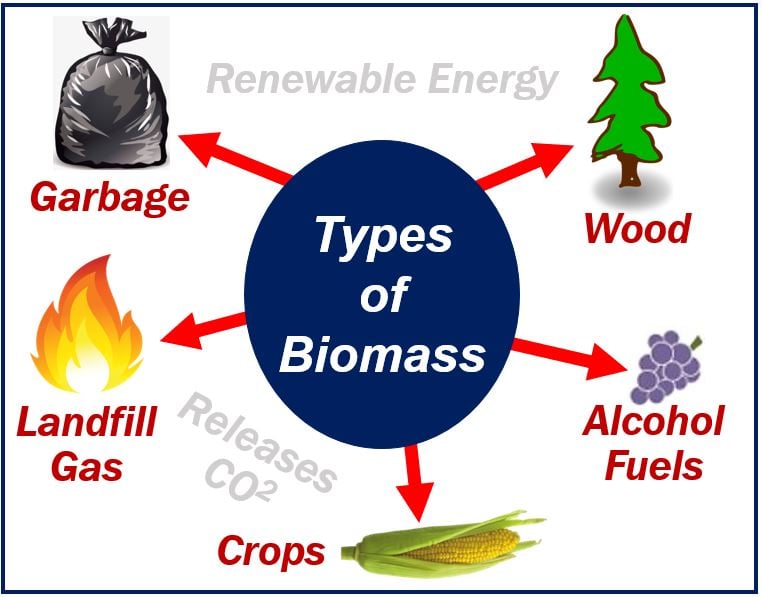Biomass Energy is an industry term that refers to obtaining energy by burning wood, plants, and other organic matter. Manure, for example, is organic material.
Although burning plants, manure, etc., releases CO2 into the atmosphere, we class it as renewable energy. It is renewable energy because we can replace plants or organic materials.
The US Energy Information Administration has the following definition:
“Biomass is organic material that comes from plants and animals, and it is a renewable source of energy.”
Biomass is not only versatile because it comes from a variety of sources, but it also allows for multiple modes of energy retrieval, including direct combustion, gasification, and anaerobic digestion.
Biomass – stored energy from the Sun
When we use the energy from biomass, we are using energy that originally came from the Sun. Trees and other plants use a process we call photosynthesis to absorb the Sun’s energy.
Wood, for example, releases its chemical energy as heat when we burn it.
We can either burn biomass directly or convert it into biogas or liquid biofuels.
Biomass has become popular with coal power stations. They switch from coal without wasting existing machinery, equipment, and infrastructure.

Examples of biomass
Below are some examples of biomass and how we use them for energy.
-
Wood and wood processing wastes
We burn wood and wood processing wastes to generate electricity.
We also use wood to heat homes and buildings and produce heat in industry. Humans have been burning wood to warm their homes and for cooking for thousands of years.
-
Crops
We burn crops a fuel. We also convert them into liquid biofuels.
If we ferment sugarcane juice and molasses, we get sugarcane ethanol, an alcohol-based fuel. In some countries, ethanol is a popular fuel for vehicles.
-
Household waste
In many countries, people have to separate their household waste. We can burn some of this waste to generate electricity in power stations. We can also convert it into biogas in landfills.
-
Human sewage and animal manure
We can convert human sewage and animal manure into biogas, which we can then burn as a fuel.
Usage in the United States
In the United States in 2017, biomass fuels provided approximately 5% of total primary energy use.
About 47% of the 5% consisted of ethanol, and 44% was from wood and wood-derived biomass. The remaining ten percent was from municipal waste.
Renewable energy
Renewable energy is energy that never depletes – it never runs out. In other words, we cannot use it up until there is none left – that is, in a human timescale.
Solar energy and wind energy, for example, are types of renewable energy. The Sun’s energy and the energy from moving air, i.e., wind, is always there.
Geothermal energy is also renewable energy. Geothermal energy involves getting energy from the Earth’s internal heat.
Fossil fuels are non-renewable forms of energy. Oil and natural gas, for example, are non-renewable. Oil and gas will run out one day.
The use of biomass supports the principles of a circular economy by enabling the recycling of organic waste into energy, reducing the overall environmental footprint.
Recent advancements in technology have also enhanced the efficiency of biomass conversion, allowing for cleaner combustion and higher energy output from the same amount of organic material.
Two Videos
These two YouTube videos come from our sister channel, Marketing Business Network or MBN. They explain what the terms “Biomass Energy” and “Renewable Energy” mean using easy-to-understand language and examples:
What is Biomass Energy?
What is Renewable Energy?
